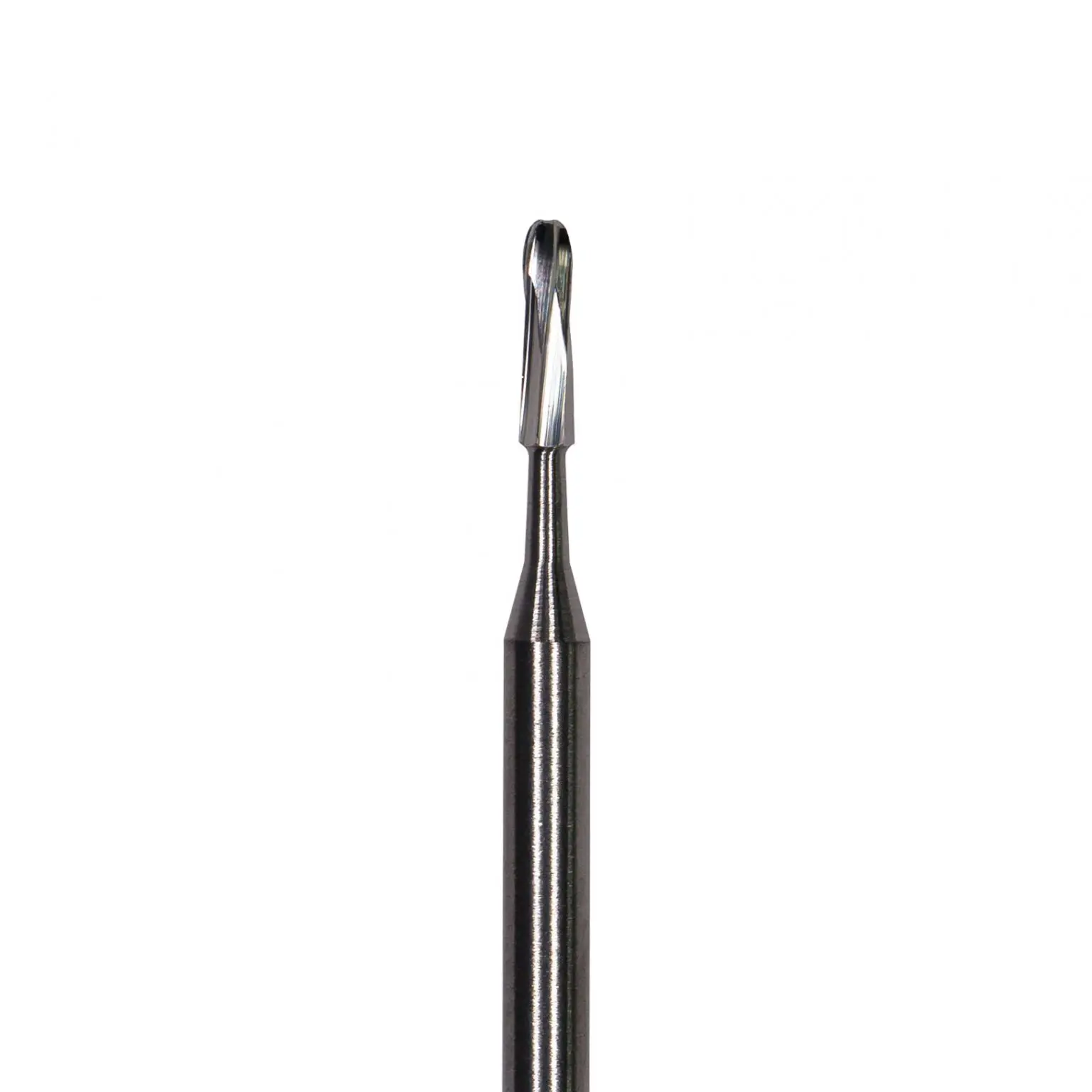Introduction to Inverted Cone Burs
● Definition and Design
Inverted cone burs are specialized dental tools characterized by their unique shape, resembling an inverted cone. They are designed with cutting edges that taper outward from the base to the tip, allowing for precise and efficient removal of dental material. These burs are typically used with high-speed handpieces, providing the necessary torque and rotation for effective application.
● Historical Development
The design and utilization of inverted cone burs have evolved significantly over the years. Originally developed to meet the specific needs of dental procedures, their design has been refined to enhance precision, durability, and efficiency. Advancements in material science and manufacturing techniques have further optimized the performance of these tools, making them a staple in modern dentistry.
Common Materials Used
● Types of Materials
Inverted cone burs are commonly manufactured from high-quality materials such as tungsten carbide and diamond. Tungsten carbide is favored for its hardness and durability, making it ideal for cutting through hard dental tissues and restorative materials. Diamond burs, on the other hand, are composed of diamond particles bonded to a metal shank, providing exceptional cutting efficiency and longevity.
● Material Benefits and Limitations
Each material offers distinct advantages. Tungsten carbide burs are known for their strength and resistance to wear, making them suitable for repeated use in demanding procedures. Diamond burs, while generally more expensive, provide superior cutting precision and smoothness, reducing the risk of chipping or fracturing the tooth. However, the choice of material often depends on the specific requirements of the procedure and the preference of the dental practitioner.
Dental Applications
● Cavity Preparation
One of the primary uses of inverted cone burs is in cavity preparation. The bur inverted cone is ideal for creating precise cuts and undercuts required for optimal cavity shape. Its design allows for the efficient removal of decayed tissue while preserving healthy tooth structure.
● Removing Decay
Inverted cone burs are highly effective in the removal of dental decay. Their cutting edges can meticulously excise carious material, minimizing damage to surrounding healthy teeth. This precision is crucial for maintaining tooth integrity and ensuring the longevity of dental restorations.
Orthodontic Uses
● Bracket Removal
In orthodontics, inverted cone burs play a crucial role in the removal of brackets and other bonded appliances. Their sharp, precise cutting edges allow for the efficient removal of adhesive material without damaging the enamel.
● Enamel Shaping
Inverted cone burs are also used for shaping and contouring enamel during orthodontic treatments. This includes adjusting the contours of teeth to improve alignment and aesthetics, ensuring a harmonious occlusion and smile.
Restorative Dentistry
● Creating Undercuts
In restorative dentistry, inverted cone burs are instrumental in creating undercuts. These undercuts are essential for providing mechanical retention for dental restorations, such as fillings and onlays. The precise design of the bur allows for accurate and consistent undercut creation.
● Preparing the Tooth Structure
When preparing the tooth structure for restorations, inverted cone burs are used to shape the cavity and remove any irregularities. This ensures a proper fit for the restoration and enhances its durability and function.
Endodontic Applications
Access
● Cavity Preparation
In endodontics, inverted cone burs are used to prepare access cavities. This involves creating an opening in the tooth to allow for the removal of infected pulp tissue and the subsequent cleaning and shaping of the root canals.
● Pulp Chamber Modification
Inverted cone burs are also used to modify the pulp chamber during endodontic procedures. Their precise cutting action allows for the removal of pulp tissue and shaping of the chamber, facilitating effective cleaning and disinfection.
Prosthodontic Uses
● Crown and Bridge Preparations
For prosthodontic applications, inverted cone burs are essential for preparing teeth for crowns and bridges. Their design allows for the removal of tooth structure with precision, creating a suitable base for the placement of prosthetic devices.
● Creating Grooves and Slots
Inverted cone burs are also used to create grooves and slots in teeth during prosthodontic procedures. These features are necessary for enhancing the retention and stability of crowns, bridges, and other prosthetic restorations.
Techniques for Optimal Usage
● Speed and Pressure Control
To achieve optimal results with inverted cone burs, it is crucial to control the speed and pressure during use. High-speed rotation combined with moderate pressure ensures efficient cutting while minimizing the risk of overheating and damage to the tooth structure.
● Safety Precautions
Safety is paramount when using inverted cone burs. Proper protective equipment, such as gloves and eye protection, should be worn to prevent injuries from flying debris. Additionally, ensuring the bur is securely attached to the handpiece and operating at the correct speed reduces the risk of accidents.
Maintenance and Sterilization
● Cleaning Protocols
Maintaining and sterilizing inverted cone burs is essential for ensuring their longevity and preventing cross-contamination. Burs should be thoroughly cleaned of debris and biological material immediately after use. Ultrasonic cleaners and specialized bur brushes can be used to achieve this.
● Extending Tool Life
Proper maintenance practices can significantly extend the life of inverted cone burs. This includes regular inspection for wear or damage, proper storage to prevent contamination, and adhering to manufacturer guidelines for sterilization processes.
Advancements and Future Trends
● Innovations in Design
The design of inverted cone burs continues to evolve, with manufacturers incorporating advancements such as enhanced blade geometries, improved materials, and ergonomic designs. These innovations aim to improve cutting efficiency, reduce operator fatigue, and enhance patient comfort.
● Emerging Applications
As dental technology advances, new applications for inverted cone burs are emerging. This includes their use in minimally invasive procedures, CAD/CAM dentistry, and other specialized fields. Continued research and development will likely expand the versatility and functionality of these essential dental tools.
Conclusion
Inverted cone burs are indispensable tools in modern dentistry, offering unparalleled precision and efficiency for a wide range of applications. From cavity preparation and decay removal to orthodontic adjustments and prosthodontic preparations, their unique design and cutting capabilities make them an essential component of the dental toolkit.
About Boyue
Jiaxing Boyue Medical Equipment Co., Ltd. is one of the leading manufacturers, mastering 5-axis CNC precision grinding technology. Boyue specializes in the production of medical rotary cutting tools, including dental burs, dental files, bone drills, and orthopedic and neurosurgery operation tools. With a commitment to precision and reliability, Boyue continues to innovate and provide high-quality dental products to practitioners worldwide.

Post time: 2024-08-02 14:49:12


